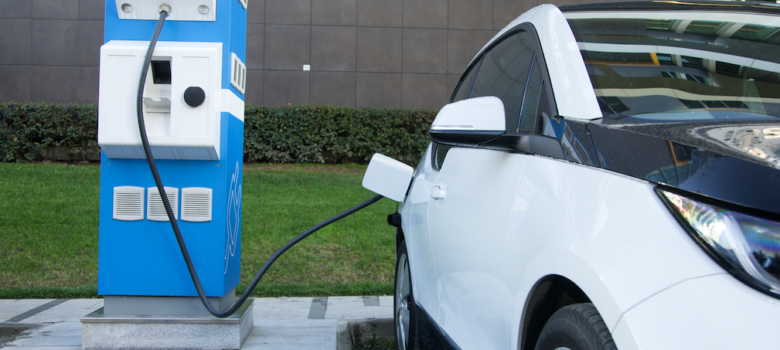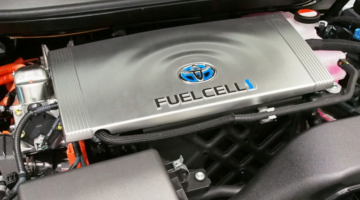
The electric car industry is growing fast, thanks to improved choice, lower prices, grants and ever-improving battery technology.
What is an electric car?
Put simply, an electric car is a one powered by an electric motor rather than a traditional petrol/diesel engine. This electric motor is powered by rechargeable batteries that can be charged by common household electricity.
History of electric cars
1900s
Electric cars are nothing new. Interest in motor vehicles increased greatly around the 1900s and at that time there were about twice as many electric cars on the road than petrol/diesel cars. It wasn’t until the 1920s that interest in electric cars dwindled. The reason was that electric cars were limited by their low top speeds and low range (just a few miles). In addition, in 1912 the electric starter motor was developed for petrol cars, eliminating the traditional drawback of petrol cars: having to use a hand crank to get the car moving!
It was Henry Ford who put the nail in the electric car coffin when his company began to mass-produce the Model T. This slashed the price of petrol cars to about half that of an electric car and so in the early 1900s almost all electric car manufacturers began to cease making them.
The limited maximum speed of electric cars (up to 30mph) limited their practicality. For most of the 20th century, British milk floats made up most of the world’s number of electric vehicles.
Interest in electric cars returned following the energy crises of the 1970s and 80s; with the availability and price of oil being shown to be increasingly volatile, people could see the potential benefits of battery-powered cars. A few big car companies brought out models and some were sold to environmentally-minded members of the public. However, in general electric vehicles were still losing out to the style and lower price of their petrol-fuelled cousins.
2000s
In the 2000s, the development of hybrid vehicles, plus another fuel crisis, saw the technology adopted by larger numbers than ever before. Tesla’s Roadster, which went on sale in 2008, was a game changer for the industry. The attractive design and extended range of the Roadster appealed to a larger market than ever before and encouraged competitors such as Nissan and Chevrolet to launch their own models.
As of September 2016, there are more than one million pure electric cars and vans owned globally.
How do electric cars work?
Fully electric car
Hybrid car
What are the benefits of electric cars?
- They produce no tailpipe emissions, so are better for the planet.
- They are exempt from road tax and from the London Congestion Charge.
- They often have a smoother drive than petrol cars.
- They are cheaper to run.
- Do not need much maintenance, as they have fewer moving parts.
What are the downsides of electric cars?
- They can have a comparatively limited range. This depends on the model, the weather and the style of driving.
- Depending on the car and the charger, they can take a long time to charge.
- Batteries may need replacing after 5-10 years in order to retain efficiency. After a few thousand few charges, the battery will lose its ability to hold charge as effectively.
- Not all parts of the country will have a charging point nearby.
How safe are electric cars?
Electric cars are measured by the same safety standards as standard cars, and many have the highest 5-star ratings. There have been (very rare) reports of lithium ion batteries catching fire and exploding, but extra safety measures are installed to ensure this cannot happen. These include fuses and circuit breakers, plus coolant run through battery packs to keep them at a low temperature.
Fans of petrol cars argue that chemicals in an electric car battery will catch fire in the event of a crash. However, a tank full of petrol is about as flammable as you can get. This is why some people believe electric cars are in fact the safer option.
Are electric cars better for the environment?
Electric cars are a more environmentally-friendly option than traditional cars because they produce no tailpipe emissions. However, they are not considered carbon neutral unless the electricity they run on is generated from a renewable source. You can read more about it here.
Can I get a grant for an electric car?
You can get a government grant of up to £4,500 for an electric car and £500 towards a home charging point. Check what you could get here.












I think 2017 is going to be the breakthrough year for electric cars. It just seems to make sense now that the cost of installer solar pv is so low and also the growth of battery systems here in the US.
Hi Mel,
I think you are right, electric cars are going to break out next year. Even near where we are a Tesla car dealership is due to open in the next few months (near the Hammersmith roundabout in London). I think Electric cars are really going to hit the mainstream. My only worry about buying one is when you arrive at a service station to recharge and the recharging units are either not working or already being used by other electric car vehicles. I have read though that more and more EV car manufactures are coming out with turbo charges that add 80% charge in 20 mins or so. This will be amazing if 80% can get you 200 miles or so (which I think the new Tesla might be able to manage. Anyway, exciting times and fingers crossed we can start phasing out Diesel with electric over the coming years.
I am going to get a Tesla Model 3 when they are released in 2018. I think the time has come to finally get onboard (excuse the pun) the move to electric cars. Having had a look, they do 215 miles on a full charge which is not that much less than a comparable petrol car. I also have a garage so can install and electric charging point pretty easily I guess (are there any grants for electric charging points atm?). I guess also that petrol stations will soon be installing the superchargers which can give you 50% charge in the time it takes for me to make a coffee. The final thing and perhaps the most important is that the Model 3 looks cool – roll on 2018 🙂
Hi ScouseHero, agreed – I think the next couple of years could be massive for the uptake of electric vehicles. Tesla are obviously really helping to bring the idea of electric vehicles to the mainstream. Firstly they are building this massive battery factory over in California, which should really bring down the prices of the batteries due to the economies of scale they are looking to achieve. Also just the simple fact battery technology is improving will obviously help electric cars in the long term – with things like quicker charging, longer lasting batteries and so forth.
The one thing that Tesla are doing differently to most of the other electric vehicle manufacturers out there is that they are trying to make electric cars directly comparable with traditional petrol cars. Firstly they are designing cars that have extended mileage (e.g. 200 miles plus). Most other manufacturers are producing cars specifically designed for driving around cities with a maximum milage of well under 100 miles. This I think is the game changer. People don’t want to have to necessarily charge their electric cars each and every night.
Secondly (and this isn’t only Tesla), electric car companies are building in supercharging functionality so the cars can charge in a far shorter period of time than was historically possible. The new Tesla Model 3 can charge 50% in 20 minutes! So now even long journeys that do require a recharge don’t require a night stop over half way!
I am looking to install an electric vehicle charging point at my home in South East London. We have a garage so ideally I would like to get it installed there so I can charge my car during the evening. Is it worth moving to an economy 7 tariff in order to be able to charge the car cheaper, or does the fact it is a car charging point automatically give you cheaper electricity? Sorry I am new to this, but I love the thought of using the Tesla Model 3 as my nip around town car like scousehero!
I found you electric charging point installer map! Very useful – worth sharing here for other users of the greenage site! http://www.thegreenage.co.uk/find-local-installer
Thank you Samual, yep we are pretty proud of our local installer map – not just good for finding electric car charging points – it also has insulation installers (e.g. cavity wall installers, solid wall installers, loft insulation and so forth), heating systems, so new boilers and forms of electric heating. It also has all forms of renewable heating. Think Check-a-trade – but specifically including energy saving solutions. Thanks for the shout out though – always appreciate a bit of positive feedback!
I am very interested in getting an electric car, but I am wondering whether to go for a hybrid since there doesn’t seem to be that many electric charging points in the UK. I am wondering how often I am going to have to recharge my car for a city type car (like a Nissan Leaf for example). Also, should you get Economy 7 if you have an electric car so you can charge it in the evening for cheaper or is the electricity that comes out of the electric car charger charged at a cheaper rate than the electricity you would get out of the grid.
Is there a simple way to compare the price to run an electric car versus the price to run a petrol car? Thanks for your help – great website by the way!
Not there yet despite advances in cell technology ( Prof Goodenough ) far better range,along with allotment of charging points & an upgrade of the National Grid will have to be made. Also pricing ranges will need to become more affordable. It is very doubtful that the UK will see a complete change to EV CARS & LCV by 2040?
What will be done on HGV vehicles,agricultural or plant? Then there are the diesel powered ships? Ideally power stations are to be nuclear – this throws up controversial issues.
One more issue – given a battery life of some 6 years,what thought has been given to exhausted cell disposal? Will the cost of renewing batteries disuaded people from EV cars? Manufacturers need sell large numbers of vehicles,will they also simply make replacement cells or concentrate on complete vehicles? What safeguards will see standards of quality exercised on the manufacture of non OE batteries? Unless cells of greater longevity & performance are developed – at affordable cost,I cannot see mass adoption of electric cars. Along with charging points,& a suitable grid to service envisaged increase in EV numbers.We’re a long way from the state’s desire to see a complete change to these vehicles.
Has thought been given to spent cell disposal? Given a life of some six years for current battery life. Will manufactures be willing to supply spare cells or just concentrate on their key interest of complete vehicles? If other sources of supply are present,what safeguards on standards of manufacture will be present? As things stand with limited range & lack of charging facilities as well as cost of purchase, the public will not be willing to buy into the EV market.
A major & costly restructuring of the grid system will be needed to see mass use of these vehicles.
Hi
My name is Rob Grindley and I work for an engineering supplies company called Bearingtech.
Recently I have written some small articles on various topics and one of these articles is on electric cars.
Would this be of interest for your website ?
If you would like to view the article please let me know asap and I will forward across for you.
There is no payment required.
Many thanks
Rob
Hi Rob,
For guest spots on our website why don’t you drop an email to mailbox@thegreenage.co.uk. We’d be happy to discuss your writing 🙂
Thanks!
Harri
hi there is is possible to let me know the references for this please?